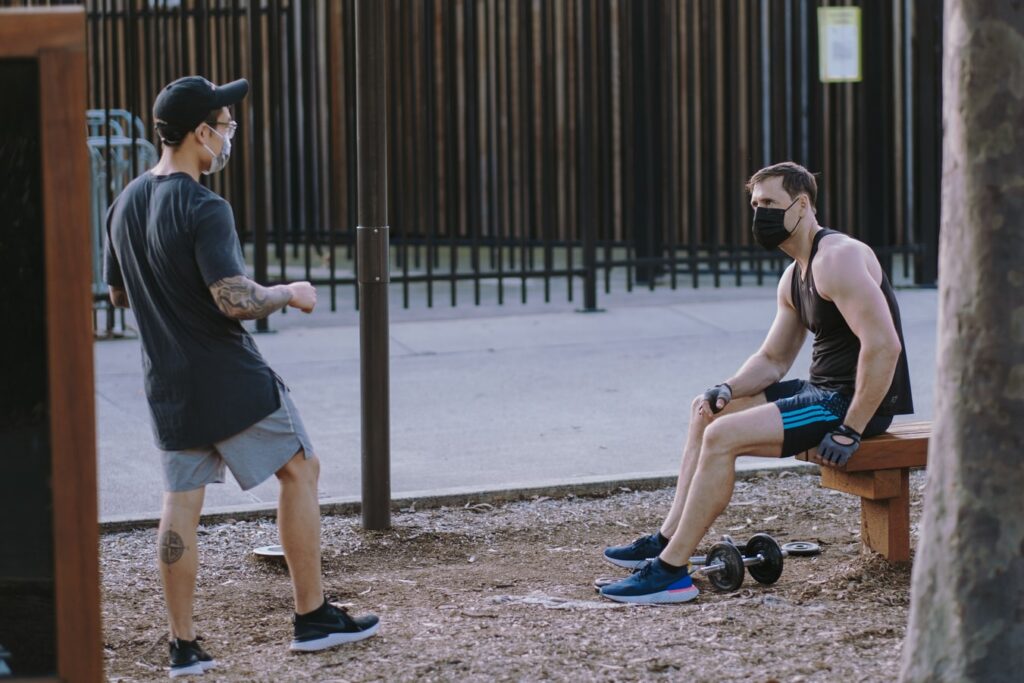Masks save lives. It’s not a motivational campaign, it’s the conclusion of a new study published in the journal Nature Medicine. According to the new analysis, nearly 130,000 Americans would be saved if 95% of the population would wear a mask.

How to save a life
As winter dawns on North America, we’re back to where we started over 6 months ago: cases are rising and scientists are still strying to convince people to wear masks. There’s another similarity to the pandemic spring –we’re back to looking at modelling predictions to know what we can expect.
Dr. Christopher Murray of the University of Washington and colleagues made estimates and quantified several scenarios. In what they described as the worst-case scenario, COVID-19 could kill over a million Americans between September 2020 and February 2021. This is under the “current pattern of easing” restriction in several states, and if mandating masks doesn’t become widespread.
But if in the second scenario masks are also introduced to the equation, it makes a big difference. If 95% of the population were to don face coverings, there would be 130,000 less victims, researchers estimate. Even if 85% of Americans wear masks, it could still save 96,000 lives.
But if in the second scenario masks are also introduced to the equation, it makes a big difference. If 95% of the population were to don face coverings, there would be 130,000 less victims, researchers estimate. Even if 85% of Americans wear masks, it could still save 96,000 lives.
Of course, the usefulness of these models is limited and they serve more to offer an indication as to what might happen. In this case, the model indicates that a higher percentage of mask wearing will make a big dent in disease transmission.
“It is unreasonable to expect any model to do everything well, so each model makes compromises to serve a purpose, while maintaining computational tractability,” researchers wrote.
More science, same misinformation
There’s one thing that has changed: our understanding of the virus is significantly better. That’s not to say that we know everything there is about the virus — the questions still abound, but we’ve nailed a few things down.
Among them, the fact that masks, imperfect as they may be, really help. reduce viral spread — we’re already seeing that states with a higher percentage of mask-wearing have a lower percentage of people who know someone with COVID-19 symptoms.
But one thing that’s stayed the same is the prevalence of misinformation, including misinformation linked to leading echelons of US policymaking. The most recent case is an assertion by Dr. Scott W. Atlas, the president’s science adviser.
Atlas, a radiologist who has advocated herd immunity, Tweeted that masks are ineffective — a tweet that was later taken down by Twitter for spreading misinformation.
Although Atlas is not an expert in public health or epidemiology, he was chosen by President Trump to serve as a COVID-19 advisor. Atlas has advocated for less testing on the virus — a position that goes against the guidance from all health organizations and epidemiology experts — and has even stated that “children almost never transmit the disease”, which is demonstrably false. While Atlas seems to agree with Trump’s personal preferences, he goes against what the science is saying.
In September 2020, 78 of Atlas’s former colleagues at the Stanford Medical School signed an open letter criticizing Atlas, writing that he had made “falsehoods and misrepresentations of science” that “run counter to established science” and “undermine public health authorities and the credible science that guides effective public health policy.”
Resistance to mask-wearing is owed in part to this type of misinformation. In the current situation, it seems increasingly unlikely to see 95% or even 85% of Americans wearing masks.
Meanwhile, the Centers for Disease Control and Prevention released new guidance recommending mask use in public settings, including public transportation.






